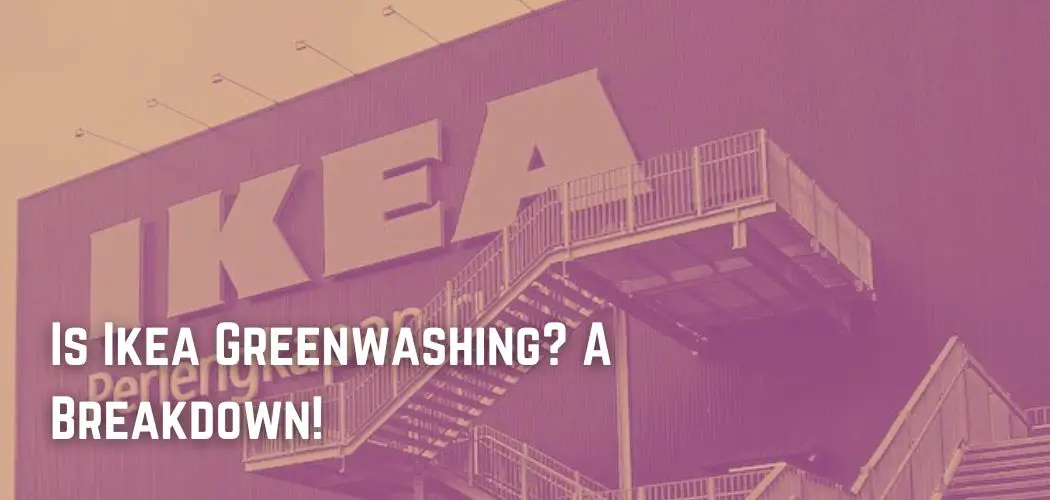IKEA is an unquestionably successful enterprise, with over 400 locations in over 30 countries.
It is particularly exciting because it is nearly impossible to visit their store and leave with only one item.
It is designed to make you purchase items you never intended to buy, a la Gruen effect. It is a psychological phenomenon that causes consumers to lose track of their initial goals and results in impulsive purchases. In other words, excellent design means excellent revenues.
The brand’s home decor is so inexpensive that it is not meant to be repaired. “Renewable metabolism,” on the other hand, is when resources are made to be recycled or reused.
IKEA has stated that this is its goal for the foreseeable future. For every business, it should be the main goal since unsustainable consumption is the main cause of environmental damage.
When a company puts its people and the planet on the same level as its profits, it can have a big effect on other companies or people and change how we think about climate catastrophe.
However, let’s be realistic: can a company that makes EUR 34 billion in sales revenue, and 915 million users annually, really be sustainable?
Benchmarks Hold Corporations Accountable
Due to a lack of accessible data, it is difficult for governments, investors, and consumers to gain a good picture of how corporations are performing in this area.
The World Benchmarking Alliance (WBA) and the IKEA Foundation are working together to solve this problem. The WBA’s benchmarks assist everyone in understanding which companies are leading in their sustainability performance and which are falling short.

Companies are incentivized to improve when they are transparent and make data publicly available. It provides a reliable instrument for measuring company sustainability.
This will assist businesses in contributing to a just and sustainable future in which children and their families may afford a better standard of living on a planet that is habitable.
Environmental Impact
IKEA utilized 13.56 million cubic meters of wood-based board and solid wood products in 2017 alone, excluding packaging and paper.
That is 1 percent of all commercially used wood in the globe! The concept of IKEA’s commitment to environmental protection sounds controversial.

The company’s website says “zero waste” over and over again, but have you seen how much packaging they still use? Technically, IKEA’s paper never even claimed that the cotton would be organic; it merely promised that it would be “more sustainable.”
Also, the amount of wood won’t go down. Instead, the brand will favor suppliers who are certified over those who aren’t.
Is It Green Enough?
Critics have criticized IKEA’s efforts to be green in the past, including the building of its “greenest store” in Greenwich, London.
In order to build the store, a pioneering, environmentally friendly supermarket that had only been there for 17 years was torn down.
One piece in the design magazine asks, “IKEA claims its latest London shop is the greenest ever.” However, how can this be the case if another green structure was removed to make room for it? “
Even within the organization, the legitimacy of eco-friendly activities is questioned. IKEA’s CEO, Jesper Brodin, told Forbes in 2013 that “we are still having internal conversations over the fear of greenwashing.” He stated that “at this time, shortcuts will not benefit people.”

IKEA has partnered with circular economy experts at the Ellen MacArthur Foundation to do things properly.
The company says that by the end of the next ten years, all products will be made from materials that can be reused, recycled, or made from renewable resources.
This means that everything in stock will have to be ready for reuse, repair, remanufacturing, or recycling so that as little waste as possible ends up in landfills.
The European Environment Bureau says that businesses and people in Europe throw away 10 million metric tons of furniture every year.
Most of this material ends up in landfills or is burned, so experts are working to make the sector more circular by starting programs like repair and resale.
In September 2020, the company also said it would invest an extra €600 million around the world to reach its goal of becoming completely circular and good for the environment.
This money will be split evenly between green businesses, renewable energy, and green retail and warehouse projects.
In 2019, IKEA has a global yearly revenue of over €41.3 billion and has invested €3.2 billion in environmental efforts over the past decade.
Sustainable Future?
In recent years, IKEA has made sustainability one of its primary objectives. A week ago, they announced that they would purchase any old or damaged IKEA furniture for recycling reasons.
The IKEA team is “dedicated to having a positive influence on people and the world” and has a goal of becoming “climate positive” by 2030.

Ikea is dedicated to a sustainable future. They want to cut down on plastic pollution and get rid of all single-use plastic from their furniture line by the end of 2020. They will replace it with cutlery made of wood and straws made of paper that will last for a long time.
Today, almost sixty percent of IKEA’s items are made from reusable materials. Their strategy for 2030 is nothing short of astounding.
Instead of fossil fuels, sustainable plastics will be made from things like sugar beets, sugar cane, and corn. They’ll make sure their wood comes from a known source, and they won’t buy cotton made with forced labor.
Conclusion
No company is flawless. According to the information given above, it is clear that they have greenwashed their customers.
If IKEA’s environmental goal hinges on balancing financial imperatives, so be it. The fact that IKEA is headed in the correct direction is far more crucial.
Whatever worked for the market seven decades ago now seems obsolete. If IKEA wishes to make a difference, it must compromise some of its core ideals and alter its business.
